
Ingredient
Bovine tail
"The Hidden Gem: Exploring the Richness of Bovine Tails"
Bovine tail, also known as oxtail, is a flavorful and gelatinous cut of meat derived from the tail of a cow. It is characterized by its rich marbling, tender meat, and a generous amount of connective tissue, which gives it a unique texture when cooked. The meat is dark and succulent, while the surrounding fat adds a lusciousness to stews, soups, and braised dishes. Bovine tail is often sought after for its ability to impart a robust and savory flavor to dishes, making it a favorite among chefs and home cooks alike.
Origins and history
Bovine tail has a long history in various cuisines around the world. It has been used in traditional dishes in countries such as Jamaica, Spain, and Korea for centuries. In Jamaican cuisine, oxtail is a staple ingredient in their famous oxtail stew, while in Spain, it is used in hearty dishes like rabo de toro. In Korean cuisine, braised oxtail soup, known as kkori gomtang, is a beloved comfort food. The use of bovine tail in these cultures can be traced back to the utilization of every part of the animal, showcasing resourcefulness and culinary creativity.
Nutritional information
Bovine tail is a good source of protein, iron, and collagen. It is also relatively high in fat content, so moderation is key when incorporating it into your diet.
Allergens
Bovine tail may contain allergens such as beef and collagen, which can trigger allergic reactions in some individuals.
How to select
When selecting bovine tail, look for cuts that have a good amount of meat and fat. The meat should be firm and moist, while the fat should be creamy white and evenly distributed. Avoid tails with a strong odor or signs of discoloration.
Storage recommendations
To maintain the freshness and quality of bovine tail, it is best to store it in the refrigerator at a temperature below 40°F (4°C). If not using immediately, it can be frozen for longer-term storage. Properly wrapped or sealed, it can last in the freezer for up to three months.
How to produce
Bovine tails are typically produced through the butchering process of cows. Raising cows for their tails specifically is not a common practice.
Preparation tips
Bovine tail is best prepared through slow cooking methods such as braising or stewing. Before cooking, it is recommended to sear the tails to enhance the flavor and develop a rich caramelized crust. The connective tissue in the tail requires a longer cooking time to break down and become tender, resulting in a melt-in-your-mouth texture. It is often used in dishes like oxtail soup, oxtail stew, or braised oxtail with vegetables. For added depth of flavor, marinating the tails in a flavorful mixture overnight can further enhance the taste.
Culinary uses
Bovine tail is commonly used in various cuisines to add richness and depth to dishes. It is often used in stews, soups, and braised dishes, where the long cooking time allows the collagen in the tail to break down and create a thick, flavorful sauce. It can also be used to make stocks and broths, adding a robust flavor base. The tender meat from bovine tail can be shredded and used in tacos, sandwiches, or pasta dishes, providing a unique twist to familiar recipes.
Availability
Bovine tail is commonly available in regions where beef is consumed. It can be found in grocery stores, supermarkets, and butcher shops that offer a wide range of meat cuts.
More ingredients from this category
Recipes using Bovine tail
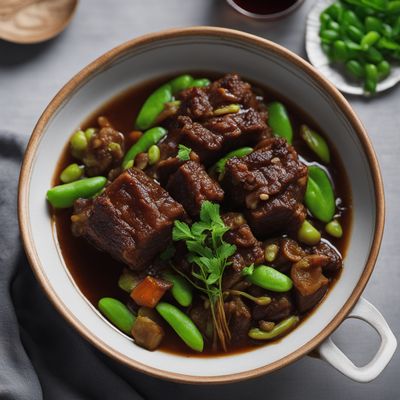
Chinese Braised Oxtail with Broad Beans
Savory Slow-Cooked Oxtail Delight
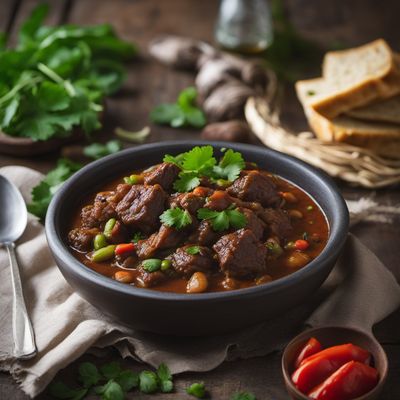
Ugandan-style Oxtail Stew with Broad Beans
Savory Oxtail Delight: A Taste of Uganda
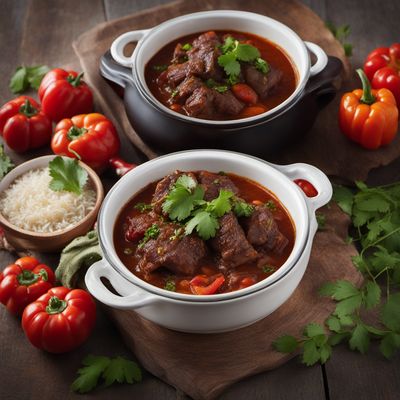
Slow-Cooked Cuban Oxtail Stew
Savory Delight: Cuban Oxtail Stew with a Fiery Twist

Indonesian-style Oxtail Soup
Savory Delight: Indonesian Oxtail Soup
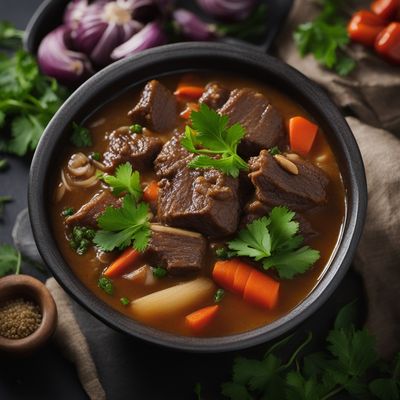
Nauruan-style Oxtail Soup
Savory Oxtail Delight: Nauruan-style Soup

Slow-Cooked Spanish Bull Tail Stew
Savory Delight: Spanish Bull Tail Stew

Hunan-style Oxtail Soup
Fiery Hunan Oxtail Delight

Braised Oxtail in Tomato Sauce
Savory Delight: Slow-Cooked Oxtail in Rich Tomato Sauce
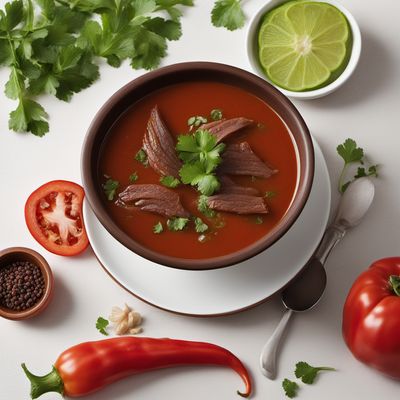
Panamanian Beef Tail Soup
Savory Delight: Panamanian Beef Tail Soup

Slow-Cooked Beef Tail Stew
Australasian Beef Delight: Slow-Cooked Beef Tail Stew

Chettinad-style Beef Tail Soup
Spicy and Fragrant Chettinad Beef Tail Soup